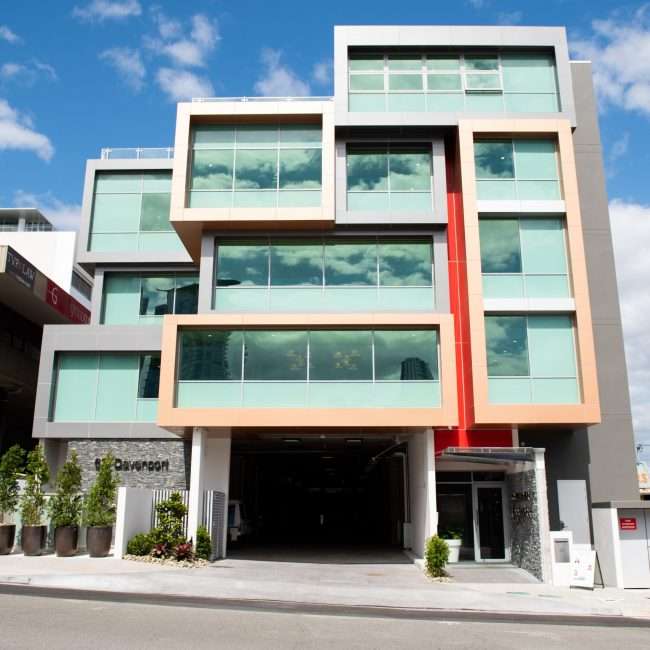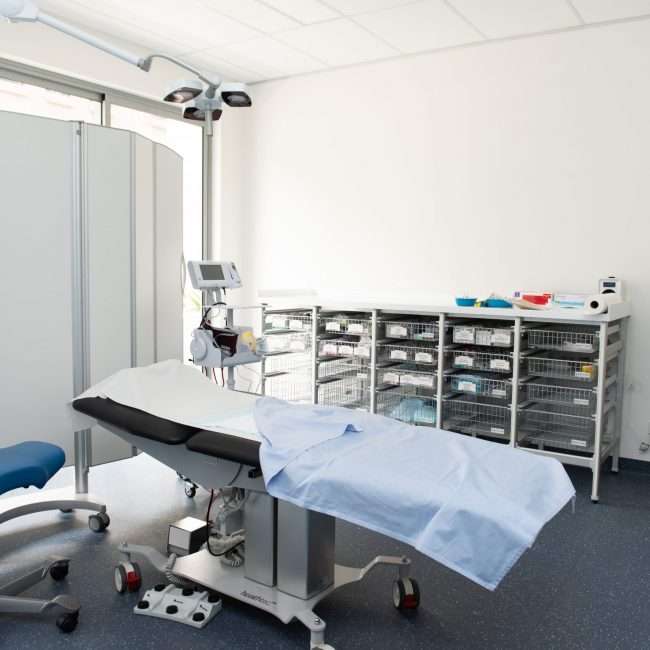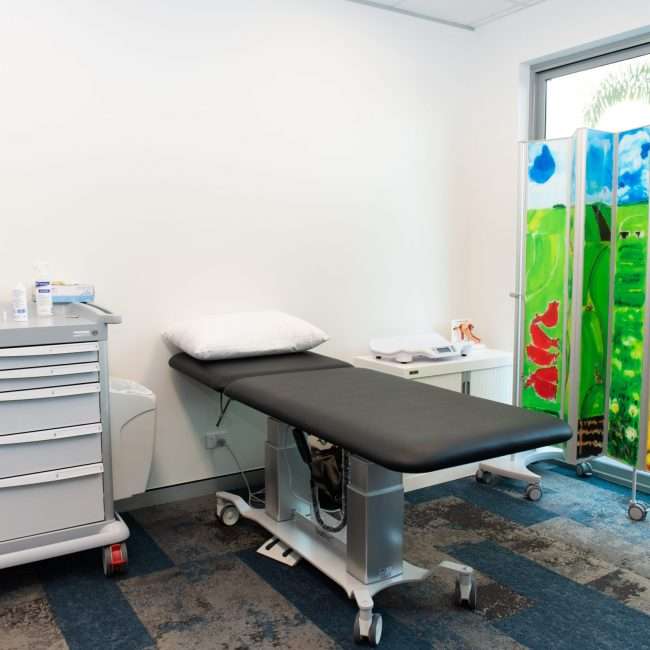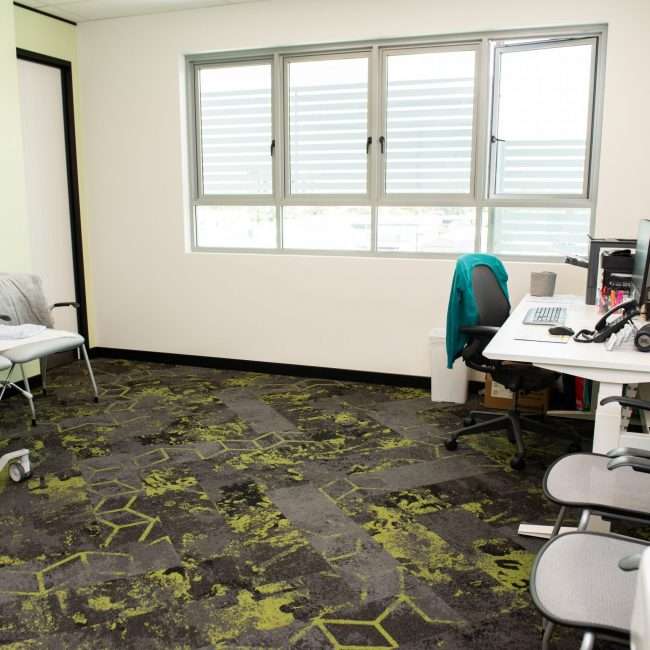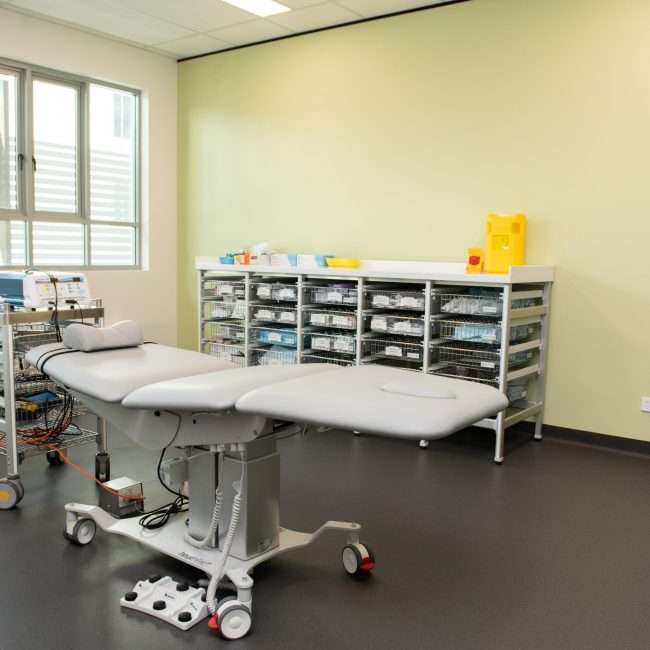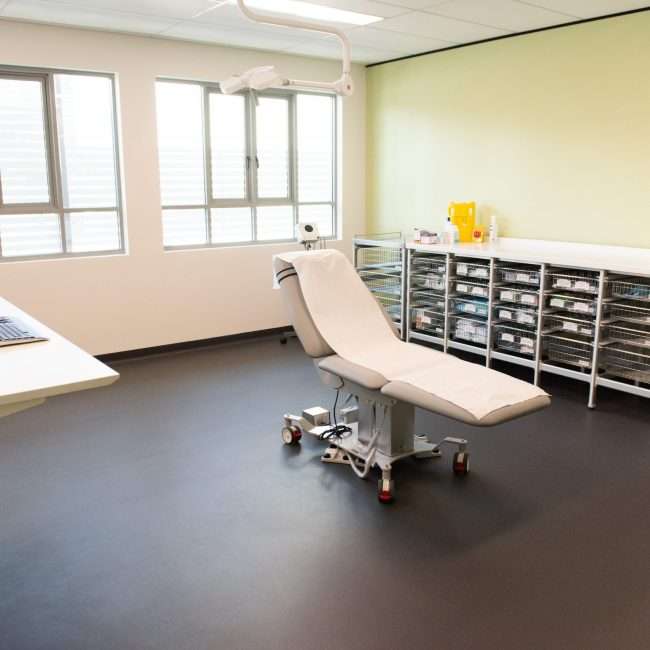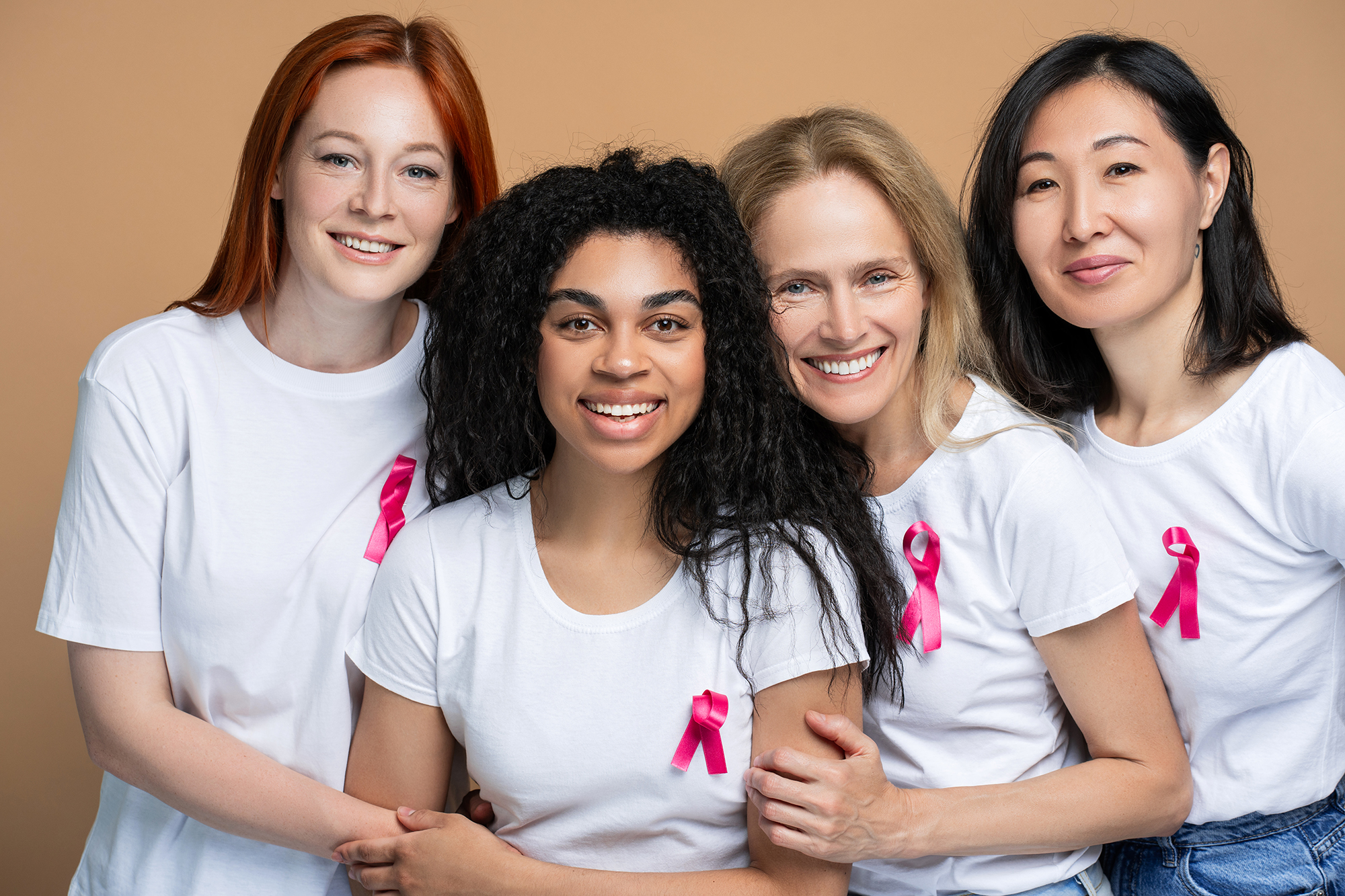Skin Cancer Clinic
Southport Skin Cancer is Southport Doctors’ dedicated skin cancer clinic, located on the third floor of our building in Southport.

SKIN CANCER CHECKS AND SURGERY GOLD COAST
Maintain healthy skin with Southport Skin Cancer Centre
Southport Skin Cancer Centre is Southport Doctors’ dedicated skin cancer clinic, located on the third floor of our building in Davenport Street.
Having completed extensive further training and assessment in the skin cancer field, Dr Donna Armstrong and Dr Graham Sivyer have obtained full accreditation with the Skin Cancer College of Australasia, and regularly attend ongoing education courses to hone their skills and remain up-to-date.
Our consulting rooms are fully-equipped with the latest technology in skin imaging using Dermoscopy and digital image storage for the detection and monitoring of skin lesions. Dermoscopy (magnified imaging of the skin) is extremely important in diagnosing all skin cancers and it is essential that any skin doctor be extremely proficient in this skill. Storage of these images allows your doctor to identify changes in skin cells from skin check to skin check, allowing for the early detection of cancerous lesions requiring removal. All of our skin doctors are experienced in performing complex skin cancer surgery involving flaps and grafts with excellent cosmetic outcomes.
Some facts about skin cancer:
- Australia has one of the highest rates of skin cancer in the world – 2 out of 3 people will develop some form of the disease by the time they are 70
- Ultraviolet radiation (sun rays) is the most common cause
- Skin cancer can occur anyone there is skin, regardless of whether the area has been exposed to the sun or not
- Ultraviolet levels vary with the time of day and year. An ultraviolet level of 3 or above will cause mutations in the DNA of our skin cells.
- Our immune system’s normal response to these mutated cells is a process called apoptosis where cells are broken down, the DNA destroyed and the shrunken cells cleaned away by white blood cells. However, when cell mutations occur faster than they can be cleaned away, cancer forms.
Types of Skin Cancers:
Skin cancers are named after the skin cell that mutates and becomes cancerous. Basal Cell Carcinoma, Squamous Cell Carcinoma and Melanoma are the three most common forms of skin cancer. Rarer types of skin cancers include Merkel Cell Carcinoma, Sebaceous Carcinoma, Atypical Fibroxanthoma, Microcystic Adenocarcinoma and Angiosarcoma.
Basal Cell Carcinoma (BCC)
Basal Cell Carcinoma is a skin cancer of the basal skin cell mostly caused by exposure to ultraviolet radiation (sun or welding) but can sometimes be caused by genetics or ingestion of arsenic. This type of skin cancer rarely spreads until very late stages but can spread readily if it grows into the nerves. It is locally destructive and causes cosmetic concerns, especially if on the face. There are sub-types of this cancer that are more aggressive, meaning they grow more rapidly and have large root systems.
Squamous Cell Carcinoma (SCC)
Squamous Cell Carcinoma is a skin cancer of the squamous cell of the skin. This type of skin cancer can spread to other parts of the body, such as lymph nodes. The potential to spread is determined by the thickness of the skin cancer, its location and the grade (differentiation). Areas such as the lips and ears carry a high chance of early spread. It is important that this skin cancer is excised as soon as possible. Sometimes if a SCC is advanced and shows signs of invasion, particularly in small nerves, radiotherapy will be needed to reduce the risk of spread. Lymph nodes spread is very relevant with SCC’s.
Melanoma
Melanoma is a skin cancer of the melanocyte and is a particularly aggressive form of skin cancer. It is totally curable with early diagnosis and excision. Dermoscopy is extremely important in the early diagnosis of melanoma. This skin cancer spreads by all means – in the skin, through the blood vessels, lymphatics and nerves. The thicker the melanoma, the worse the prognosis. A thin melanoma is less than 1mm in depth. This generally carries an extremely good prognosis of cure after appropriate margin excision. A thick melanoma is anything over 1mm in depth. The greater the depth, the more serious the prognosis. There are different types of melanoma based on origin and behaviour. Superficial spreading is the most common type and begins in the superficial layers (epidermis) of the skin before it grows deeper, as opposed to nodular melanoma which arises in the dermis and can progress to a more advanced stage before it is obvious on the skin.
Common Symptoms of Skin Cancer:
The Cancer Council have identified the following as potential signs of skin cancer:
- New or growing moles
- Spots that change colour
- Spots that become raised
- Moles becoming rough, scaly or ulcerated
- Moles that become notched
- Moles that start itching or tingling
- Moles that weep or bleed
- Spots that are different from others
In between skin checks, the Cancer Council’s ABCDE Melanoma Detection Guide can be used to monitor your own skin.
Asymmetry – Spots that are not symmetrical are a risk
Border – Spots with spreading or irregular edges are a risk
Colour – Spots that are blotchy with multiple colours are a risk
Diameter – Spots that are becoming larger are a risk
Evolving – Spots that change or grow are a risk
Southport Skin Cancer Centre Southport
It is strongly recommended to have a skin check by a specially-trained, experienced skin doctor at least every twelve months, and more frequently if a high-risk patient. Regular skin examinations and monitoring of existing skin lesions can drastically improve chances of early diagnosis and consequently successful treatment.
It is important to check the credentials of the doctor performing your skin check as not all doctors have undergone specific training in the field.
Make An Enquiry
Please fill in the online enquiry form to ask a question or request an appointment.
Meet The Skin Cancer Clinic Team
Dr Paul English
Skin Cancer
Dr Phyo Thandar
Skin Cancer
Dr Jacintha Kannairan
Skin Cancer
Frequently Asked Questions
At Southport Skin Cancer Centre, we understand that getting a skin check or undergoing treatment for skin cancer can raise many questions. To help you feel informed and confident, we’ve compiled answers to some of the most common queries about Skin Cancer, If you have any additional questions, feel free to contact our friendly team, we’re here to help you prioritise your skin health with expert care.
What does skin cancer look like?
No two skin cancers look alike. Diagnosis is required followed by a careful examination by a professional of the entire skin surface. We recommend that if you have a concerning spot on your body, you should book in for a consultation with a skin cancer doctor.
How is skin cancer treated?
Treatments for skin cancer depend on the type and stage of the cancer. However, treatments will include either through surgery, freezing, radiotherapy, immunotherapy, targeted therapy or chemotherapy.
How is skin cancer diagnosed?
Skin cancer is diagnosed by a physical examination and a biopsy. The biopsy is a quick and simple procedure where part of the spot is removed and sent to a laboratory for testing. The biopsy can be taken by a doctor, surgeon or dermatologist. Results will take about a week to come back from the biopsy.
Tips on protecting your skin
To avoid overexposure to UV light, you should protect your skin by:
- Seeking shade
- Sun protective clothing
- Broad brimmed hat
- SPF 50 sunscreen every 2 hours
- Sunglasses
What if I burn easily?
For people whose skin burns really easily, you should cover up sensitive areas, wear sunblock and limit your sun exposure.
Sun exposure is safer between 10 a.m. and 2 p.m.
What is a health history?
A health history is a record of your general health. You may be asked about your health history over the phone or at your appointment. You may get a health history form to fill out before or during your visit. If you do not understand the questions, the office staff can help you.
Include information about the following:
- Illnesses and injuries
- Hospitalisations
- Surgical procedures
- Vaccinations (shots)
- Medications (ones you take now as well as ones you have taken in the past)
- Allergies
- Bad reactions to medications and foods
- Exercise habits, diet, and substance use (including alcohol, tobacco, and marijuana use)
- Illegal drug use
- Factors or events that have a major effect on your life, such as stress at work, getting married, or moving
- Family history of disease (including aunts, uncles, cousins, grandparents, parents, brothers, sisters, and children)
How does the sun effect my skin
Sunlight gives us vitamin D, which is important for healthy bones. However ultraviolet (UV) light from the sun can cause damage and skin cancer.
Our outer layers of skin contain melanin, which work to protect skin from UV rays. Melanin can only do so much to protect your skin. Overexposure causes damage to your skin cells and causes sunburn. UV rays penetrate the outer layers and pass into the deeper layers of skin, this is where the cell damage happens. Over time, your skin loses elasticity and ages quicker due to sun exposure.
Why does tanning occur?
Your skin tans because the exposure to sunlight causes the skin to produce extra melanin to increase protection. Tanning only begins occurring once dangerous ultraviolet (UV) rays have pierced through your skin causing damage. This extra melanin darkens your skin. However, the tan fades as these cells move towards the surface and die.







